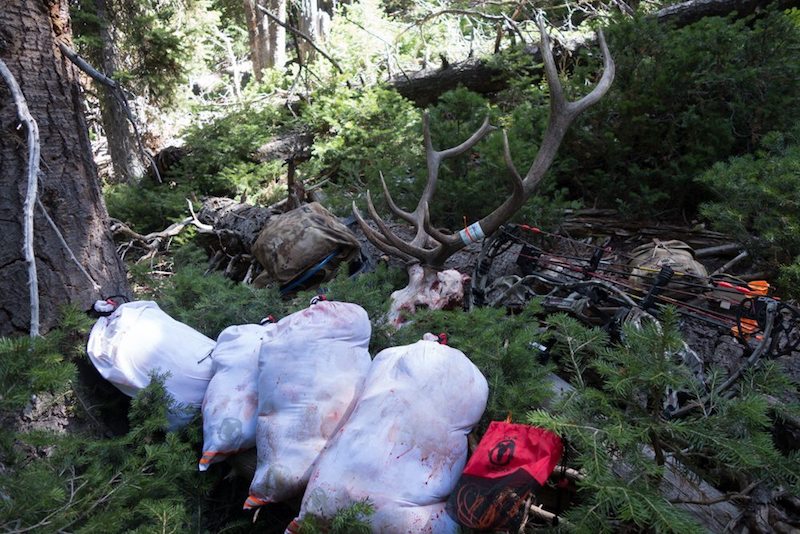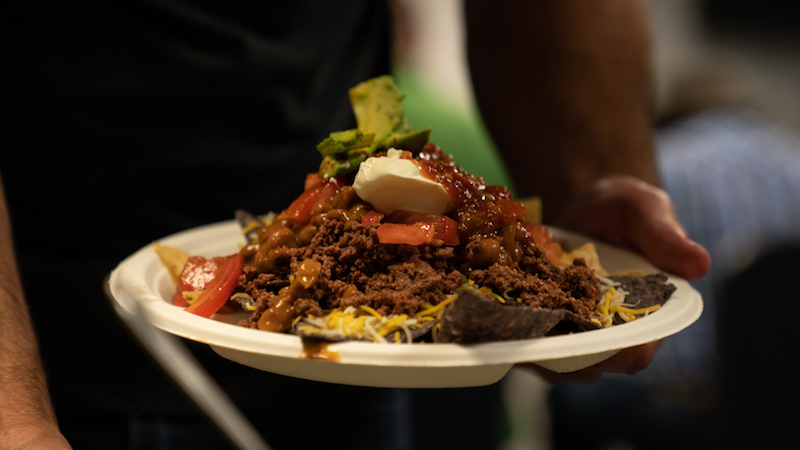You spent hours studying, scouting and shooting your bow to ensure you put a well-placed arrow into your quarry. Now that you’ve notched your archery tag, are you prepared to care for the meat and prevent waste and spoilage?
Heat is game meat’s main enemy, so you must cool it quickly. A white-tailed deer’s average body temperature is 100 F. Harmful bacteria thrive between 70 and 100 F. The longer the venison remains near this temperature, the faster bacteria can spoil it and ruin your hard work.
If you’re hunting in hot weather, you must cool the meat quickly. On cooler days, especially in sub-freezing temperatures, you have more time. As soon as you find your deer, get to work.
Most hunters field dress their deer where it falls. The first step in cooling the meat is removing the deer’s internal organs. That process also prevents funky tastes, especially if the animal was gut shot. Removing the organs also makes it easier to get the animal out of the field because it then weighs less.
Elk, deer, moose and pronghorns can be field dressed two standard ways. The most common method is to remove the internal organs by opening the carcass from anus to chest. For step-by-step directions with visual aids, read “How-to: Field Dress a Deer in 10 Steps.” Also watch this video of MeatEater host Steven Rinella field dressing a deer:
Even though you’re trying to cool the meat quickly, don’t rush it. Take care not to nick yourself or the deer’s stomach with your knife. If you plan to keep the liver and heart, remove them first and place them in shade to cool. A few carefully placed cuts let you remove all internal organs with little mess.
The alternative way to field dress game animals is called the “gutless method,” which lets you remove the meat without exposing the internal organs. Hunters often prefer this method when packing out meat or entire quarters on their backs. Some hunters think this system cools meat more quickly, especially if they removed the hide immediately to cool all sides of their quarry. Watch this video of Randy Newberg demonstrating the gutless method:
Some hunters also slice all meat from the bones to make their pack-out less heavy. If you’re considering this method, study the area’s hunting regulations because some states require the carcass to remain intact until it’s brought home or taken to a processor.
If you don’t remove the animal’s hide in the field, do so once reaching home. This job is easier if you hang the carcass. Use a razor-sharp knife and careful strokes to remove the hide without wasting meat or puncturing the hide or abdomen.
Whatever field-dressing method you choose, strive to keep the meat clean throughout the process. Remove all dirt, hair, guts and feces from the meat. It helps to keep a tarp or trash bag handy to cover the ground and provide a clean surface for stacking meat. After skinning the animal, study its carcass and pluck all hairs from the meat. Avoid getting the meat wet when temperatures exceed 40 F because water promotes bacteria growth.

Use game bags for various parts of the deer. Photo Credit: Rockslide
If you’re hunting the backcountry and plan to pack out meat, bring game bags. These breathable sacks keep bugs away and help meat cool on all sides. Don’t put meat inside plastic trash bags unless it’s cold. If you plan to drag or pull your deer from the field, carry a game bag to keep the heart and liver. If you skinned the animal at home or afield, hang its meat in game bags in a shaded area.
If you’re transporting quarters from the field, keep a cooler handy, especially if it’s hot outdoors and/or you must travel far. Frozen water bottles or dry ice will keep it cool or freeze it, but don’t let either touch the meat directly. Avoid loose ice or anything that will wet the meat.

Dispose of the carcass in an appropriate area/bin/establishment. Don’t leave it to rot. Photo Credit: QDMA
Most hunters field dress their deer where it fell, and leave the scraps and entrails at the kill site. If the animal died in or near water, drag it to dry land before field dressing to reduce the possibility of spoilage or contamination. Once you get the carcass home and processed, dispose of all bones and scraps properly. Never dump the carcass near roads, in urban areas, or anywhere else it doesn’t belong. It’s disrespectful and possibly illegal, and reflects poorly on hunters and hunting. Carcasses stink, and attract pets and scavengers.

Prepare a delicious meal with your venison and share with your friends. Photo Credit: QDMA
Cutting game meat into various parts is called “processing.” Some hunters do this work themselves, while others leave it to a processor. For an in-depth look at finding a processor and learning what to expect, read “I Harvested a Deer! But How do I Get the Meat?”
If you plan to process your deer, buy tape, a vacuum sealer, and freezer paper or freezer bags. Slice away fat and membranes you don’t want to eat, such as tendons and silver skin. Save all small cuts for making burger or sausage. Package the meat in portions that match how many people you typically feed at each meal. Label the cuts and store the packages evenly in your freezer to ensure they freeze properly.
Hunters often say the real work begins after they punch their tag, but those labors increase their satisfaction when eating the many tasty meals that follow.